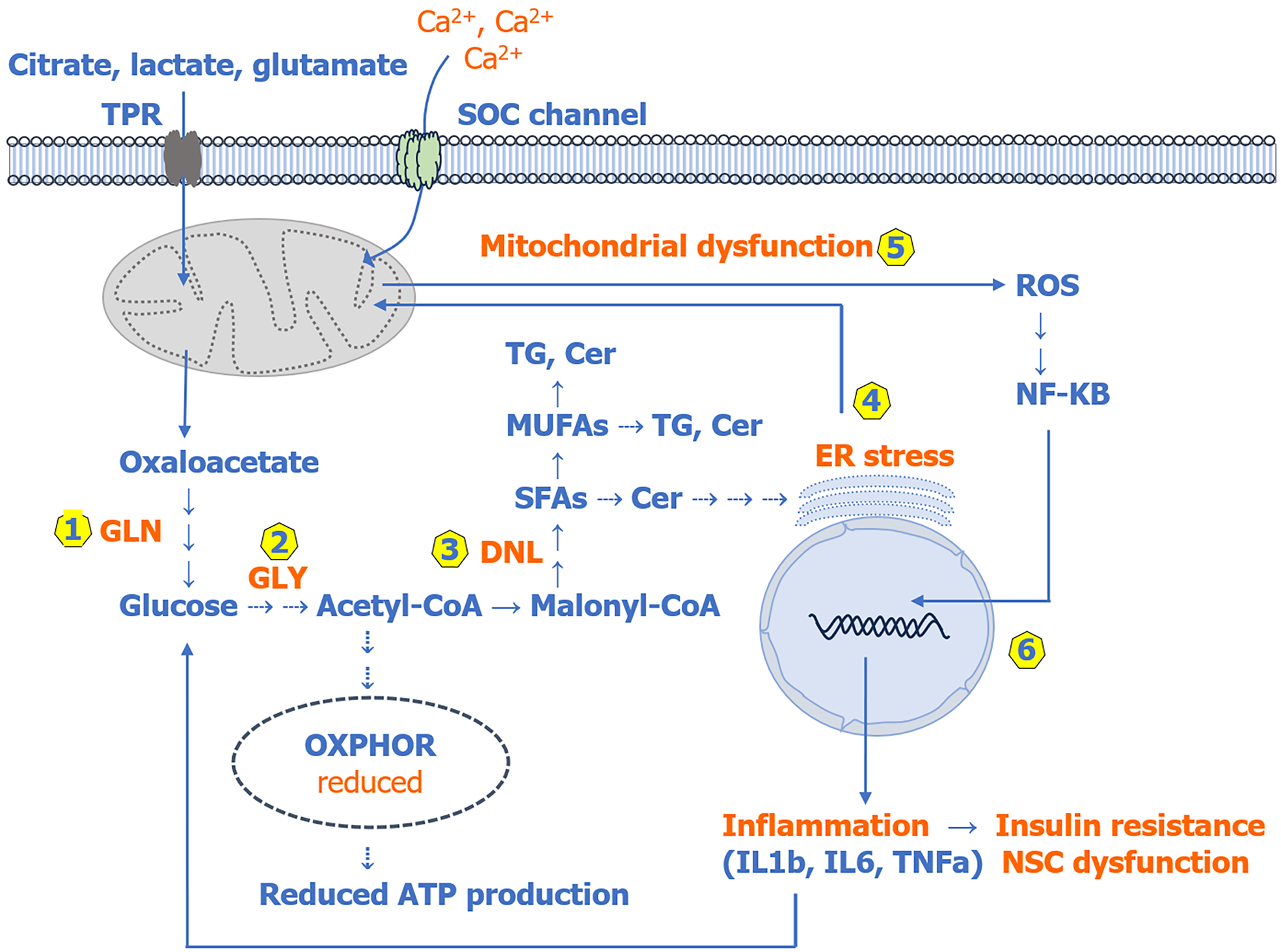Copyright
©The Author(s) 2025.
World J Stem Cells. Jul 26, 2025; 17(7): 106194
Published online Jul 26, 2025. doi: 10.4252/wjsc.v17.i7.106194
Published online Jul 26, 2025. doi: 10.4252/wjsc.v17.i7.106194
Figure 1 Scheme of de novo lipogenesis and its role in endoplasmic reticulum stress, mitochondrial dysfunction, and pro-inflammatory cytokine production in psychiatric disorders.
(1) Various non-carbohydrate metabolic intermediates could be used as substrates in gluconeogenesis to produce glucose, causing hyperglycemia in psychiatric disorders; (2) Excess glucose is oxidized by glycolysis to produce pyruvate, which is converted to acetyl-CoA; (3) Acetyl-CoA is converted to malonyl-CoA, and both are used together for fatty acid biosynthesis via de novo lipogenesis; (4) Excess saturated fatty acids and monounsaturated fatty acids synthesized via de novo lipogenesis can be converted to ceramides and triglycerides and can also be incorporated into membrane phospholipids, reducing membrane fluidity as well as inducing endoplasmic reticulum stress; (5) Mitochondrial dysfunction increasing the production of reactive oxygen species; and (6) Elevated reactive oxygen species can activate the nuclear factor kappa B pathway, which is the main pathway involved in stimulating the production of pro-inflammatory cytokines (such as interleukin 1 beta, interleukin 6, and tumor necrosis factor alpha). These pro-inflammatory cytokines have been shown to activate various cell signaling pathways involved in insulin resistance, as shown in Figure 2. TRP: Transporter; SOC: Store-operated calcium; TG: Triglycerides; Cer: Ceramides; MUFAs: Monounsaturated fatty acids; GLN: Gluconeogenesis; GLY: Glycolysis; DNL: De novo lipogenesis; SFAs: Saturated fatty acids; ER: Endoplasmic reticulum; ROS: Reactive oxygen species; NF-κB: Nuclear factor kappa B; IL: Interleukin; TNF: Tumor necrosis factor; NSC: Neural stem cells.
- Citation: Khan MM, Khan ZA, Khan MA, Pandey G. Childhood insulin resistance and neural stem cell dysfunction in psychiatric disorders: Role of de novo lipogenesis and treatment perspectives. World J Stem Cells 2025; 17(7): 106194
- URL: https://www.wjgnet.com/1948-0210/full/v17/i7/106194.htm
- DOI: https://dx.doi.org/10.4252/wjsc.v17.i7.106194









